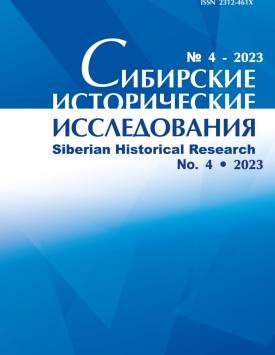Languages for Describing National Deportations in the Caucasus. Introduction to the Special Theme of the Issue
The introductory article to the compilation "Languages of Describing National Deportations in the Caucasus" discusses the challenges of studying Soviet deportations on an ethnic basis. The compilation consists of three articles dedicated to three different cases: how the deportation of the Kalmyks is reflected in the documents of the NKVD and party bodies at the sites of special deportations, in narratives about the deportation and in folk songs, as well as in the memory of the generation born after the return from Siberia. V. Tanaylova demonstrates the specificity of Chechen social memory and how the language of post-Soviet military actions in the Chechen Republic influenced the language used to describe the 1944 deportation. Drawing on archival materials, P. Takhnayeva dispels the mythologized narrative of the rescue of the peoples of Dagestan from planned deportation and reveals the reasons for the social demand for such a narrative in the context of the revision of national histories in 1990s. The authors examine which terms have become key in the study of various national deportations and why. Since national deportations are usually defined as genocidal cases, the introductory article takes a closer look at the issue of the variation of this notion depending on the context: anthropological, legal, and memorial. The authors declare no conflict of interests.
Keywords
Deportation of Kalmyks, deportation of Chechens, Dagestan, genocide, repressions, languages of description, memory, terms, thesaurusAuthors
| Name | Organization | |
| Shagoyan Gayane A. | Institute of Archeology and Ethnography, Armenian Academy of Sciences | gayashag@yahoo.com |
| Guchinova Elza-Bair M. | Institute of Ethnology and Anthropology, Russian Academy of Sciences | bairjan@mail.ru |
References

Languages for Describing National Deportations in the Caucasus. Introduction to the Special Theme of the Issue | Sibirskie Istoricheskie Issledovaniia – Siberian Historical Research. 2023. № 4. DOI: 10.17223/2312461X/42/7
